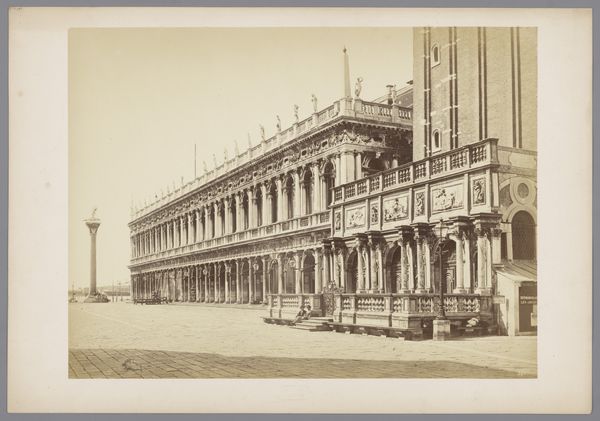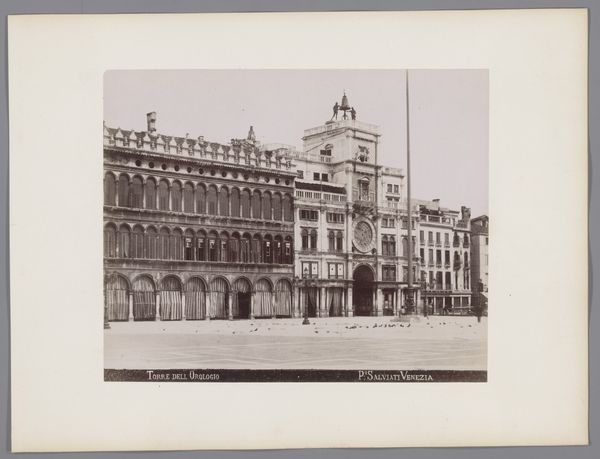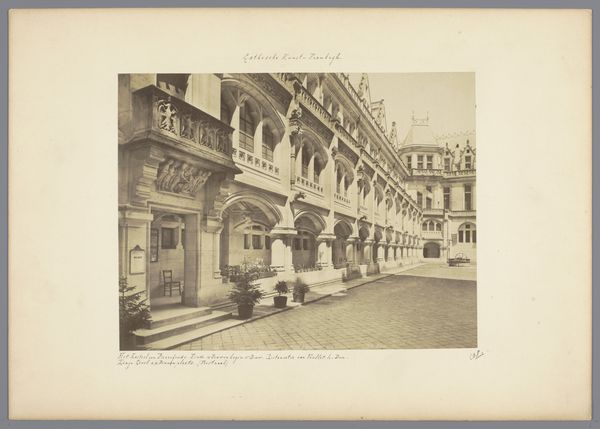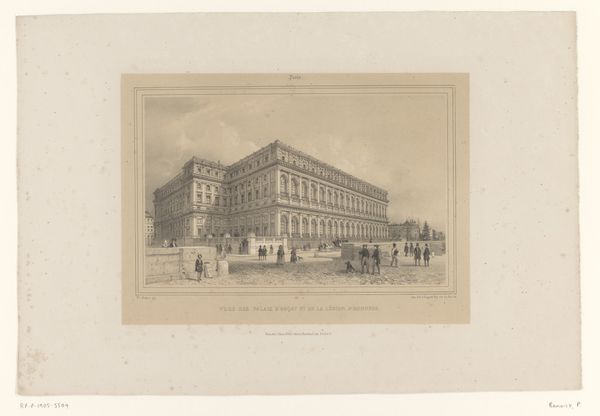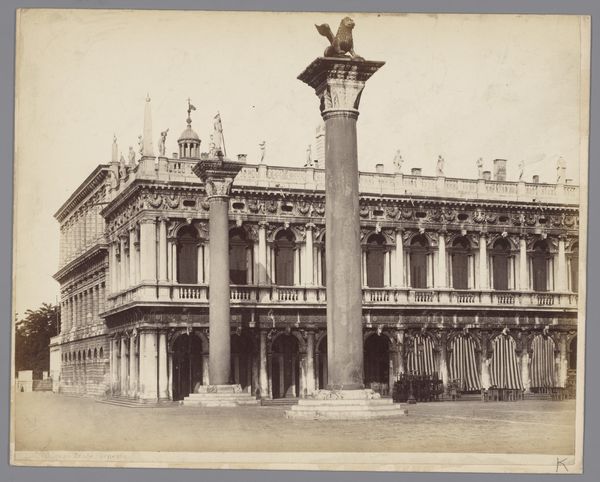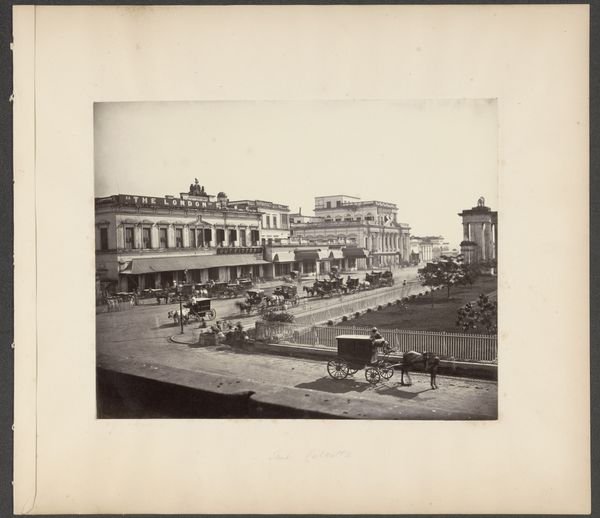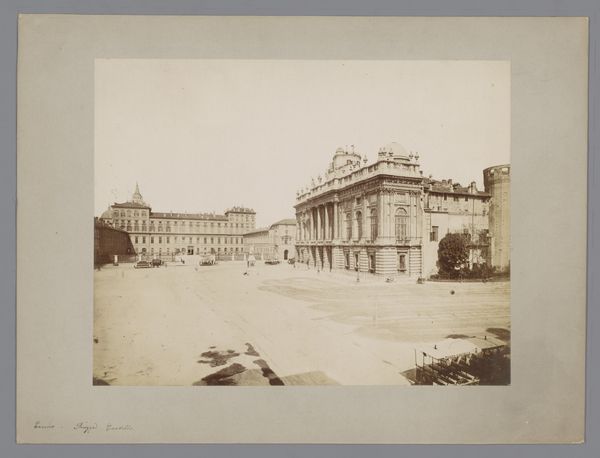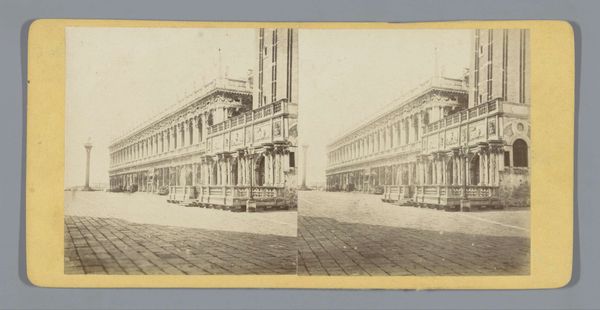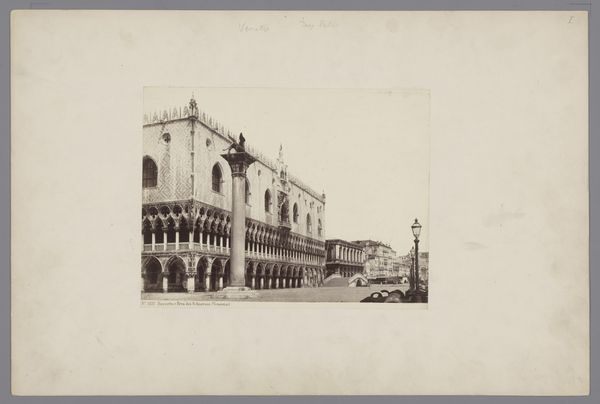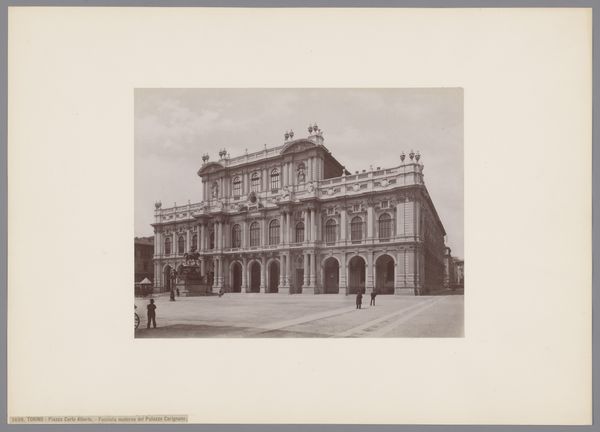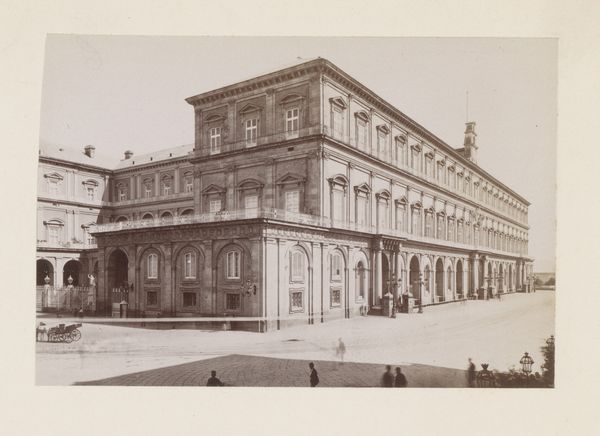
Gezicht op het Piazzetta en Palazzo Reale waar de Libreria Vecchia gehuisvest is, Venetië, Italië 1857 - 1914
0:00
0:00
giorgiosommer
Rijksmuseum
Dimensions: height 319 mm, width 479 mm
Copyright: Rijks Museum: Open Domain
Editor: Here we have Giorgio Sommer's "Gezicht op het Piazzetta en Palazzo Reale waar de Libreria Vecchia gehuisvest is, Venetië, Italië," a photograph taken between 1857 and 1914. The light and shadow play so dramatically across the architecture. How do you approach interpreting this particular image? Curator: From a materialist perspective, I’m immediately drawn to the albumen and gelatin-silver printing processes used to create this photograph. Think about the labour involved in preparing these materials, the photographer acting almost like an industrial manufacturer within their studio. It’s fascinating to consider how these processes democratised image making, allowing wider access, yet also contained within themselves hierarchies of skilled labor and access to resources. How does this mechanical reproduction influence our understanding of Venetian architecture? Editor: That’s an interesting point. I hadn’t considered the labor so explicitly. It almost feels contradictory because we're capturing something as grand as the Palazzo Reale with a method that highlights the production process itself. Curator: Precisely. And look at the almost sterile quality of the space – the absence of crowds. Does that emptiness invite us to consider the socio-economic context, perhaps a desire for an idealized view removed from the hustle and bustle that defines Venice as a trade hub? Or is it revealing a material limitation? Early photography demanded long exposure times. Could the choice to show no people be a result of this specific technology's affordances? Editor: It's compelling how the medium shapes the message. So, instead of simply viewing this as a picturesque scene, we should consider the economic and technical conditions that made this image possible and how those impacted its final form. Curator: Exactly. It invites us to think about the interplay between the representation of luxury and power and the very materials and means of production used in its creation. What's "Romantic" is now intrinsically linked to photographic *processes*, rather than grand feeling. Editor: I will definitely consider all the processes at play when I am looking at photographs in the future. Thanks! Curator: And I hope it reminds you to view art in context.
Comments
No comments
Be the first to comment and join the conversation on the ultimate creative platform.
